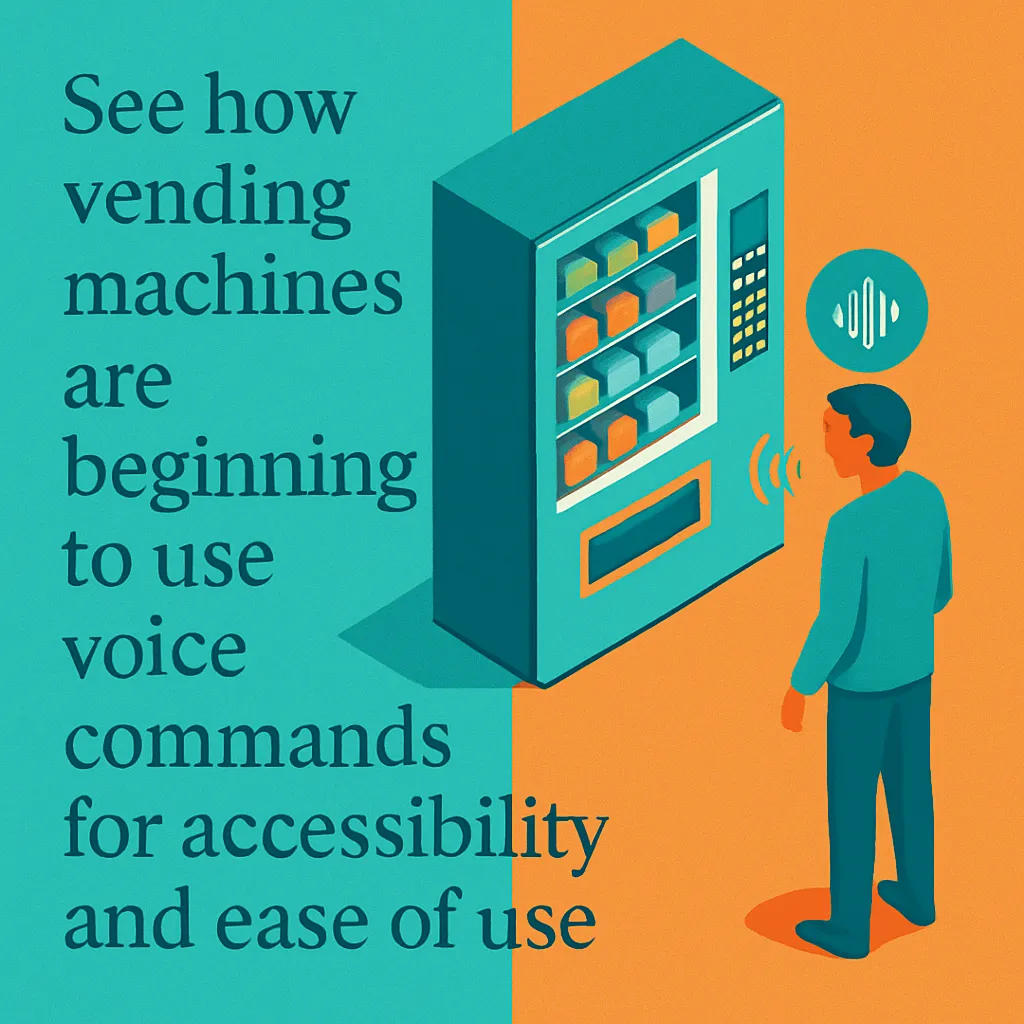Voice-Enabled Vending Machines
See how vending machines are beginning to use voice commands for accessibility and ease of use.
Back to Vending Technology ResourcesSee how vending machines are beginning to use voice commands for accessibility and ease of use.
Back to Vending Technology ResourcesVoice-enabled vending machines offer a seamless, hands-free way to select products, enhancing user convenience and promoting better hygiene in public spaces.
![]() Hands-free operation for improved hygiene and safety
Hands-free operation for improved hygiene and safety
![]() Enhanced accessibility for users with diverse needs
Enhanced accessibility for users with diverse needs
![]() Intuitive and fast product selection through spoken commands
Intuitive and fast product selection through spoken commands

Modern technology continues to redefine convenience, and vending machines are no exception. Voice-enabled vending machines represent a significant leap forward, transforming how users interact with self-service retail. By integrating advanced speech recognition and artificial intelligence, these machines offer a hands-free, intuitive, and highly accessible purchasing experience. This innovation moves beyond traditional push-button or touchscreen interfaces, anticipating user needs and streamlining transactions.
One of the primary benefits of voice-enabled vending is its contribution to enhanced accessibility. Individuals with visual impairments, those with mobility challenges, or anyone carrying items can now easily browse selections and make purchases with simple voice commands. This inclusivity opens up vending services to a broader demographic, ensuring that everyone can access snacks, drinks, and essential items without hindrance. Furthermore, the touchless nature of these machines significantly improves hygiene, a crucial factor in today's public spaces. To learn more about other cutting-edge solutions, explore what is an AI vending cooler and how it's changing the un-attended retail landscape.
Operating a voice-enabled vending machine is remarkably straightforward. Users can issue commands like "Show me beverages," "What's in aisle three?", or "Select item A2." The machine processes these requests, displays relevant options, and guides the user through the purchasing process with auditory feedback. This seamless interaction reduces friction and speeds up transactions, making it ideal for busy environments. The technology behind these systems often involves sophisticated natural language processing (NLP) to understand casual speech, alongside secure payment processing for both voice-activated and traditional methods. Understanding the underlying technology, such as when how smart vending coolers work, can shed light on the innovations driving this sector.
The implementation of voice-enabled vending machines is gaining traction in various high-traffic locations, including corporate offices, transportation hubs, and university campuses. Their ability to deliver a personalized, efficient, and hygienic experience makes them an attractive upgrade for businesses looking to modernize their amenities. As the demand for smart, connected solutions grows, voice integration is becoming a key differentiator in the vending industry. For businesses considering advanced vending solutions, understanding connectivity requirements is vital; an article on Do Vending Machines Need WiFi or Power? provides helpful insights into necessary infrastructure.
Overall, voice-enabled vending machines are more than just a novelty; they are a practical and progressive solution poised to set new standards for user convenience, accessibility, and operational efficiency in self-service retail. These advancements are part of a broader trend towards making everyday interactions smarter and more accessible for everyone.
A voice-enabled vending machine allows users to interact with it using spoken commands, often leveraging AI and natural language processing for product selection and accessibility.
Voice control offers a hands-free, more intuitive way to browse products, select items, and complete transactions, enhancing convenience and hygiene.
Yes, they significantly improve accessibility for individuals with visual impairments or mobility challenges, making vending services available to a wider audience.
They typically understand commands like 'Show me drinks,' 'Select item C5,' 'What's new?', or 'Confirm purchase,' similar to common voice assistants.
While transactional data is collected, reputable voice-enabled vending systems are designed with privacy in mind, often processing voice commands locally or anonymizing data for analysis.
Many advanced models are equipped with multi-language support, catering to diverse user bases in locations like airports, tourist attractions, or international offices.
By reducing the need for physical interaction with buttons or touchscreens, voice control minimizes touchpoints and reduces the spread of germs, promoting better hygiene.
These machines integrate AI, natural language processing (NLP), speech recognition software, and often cloud connectivity to interpret and respond to voice commands.
They are an emerging technology, currently found in select innovative environments, but their adoption is growing due to increasing demand for touchless and accessible solutions.
Yes, most voice-enabled machines are hybrid, integrating voice control with traditional payment methods like card readers and mobile payment options for maximum user flexibility.